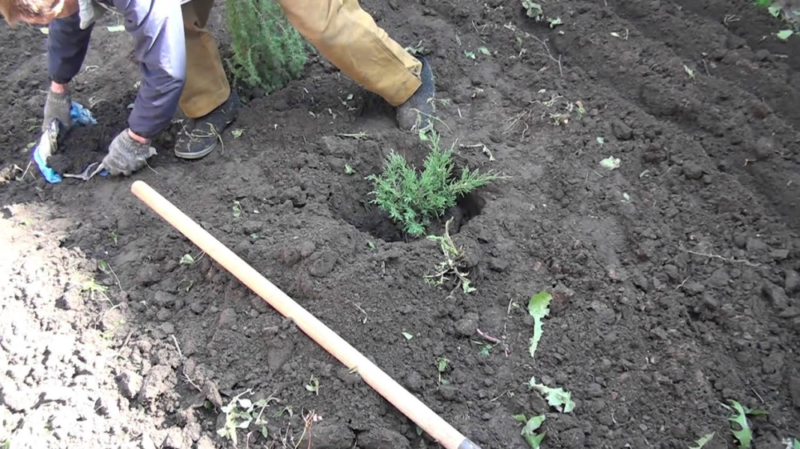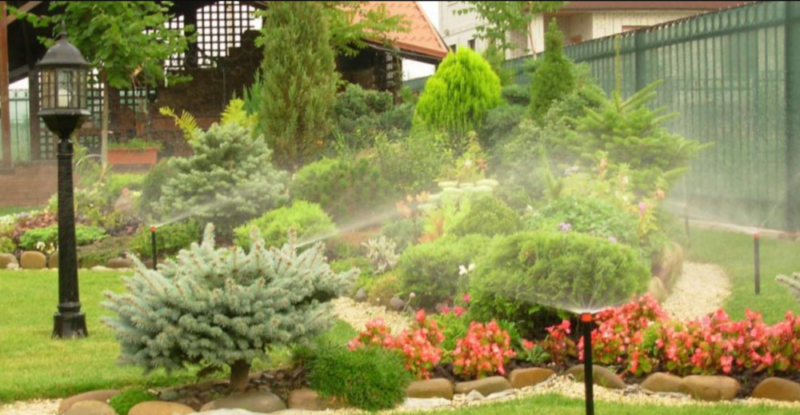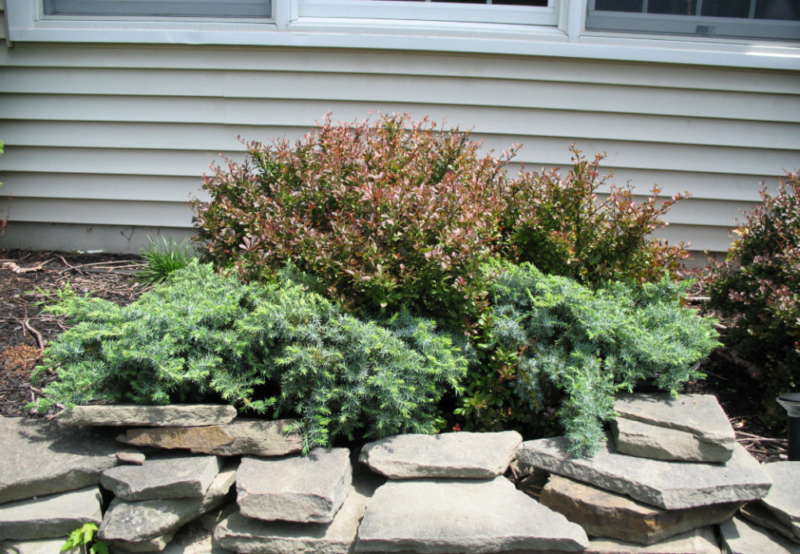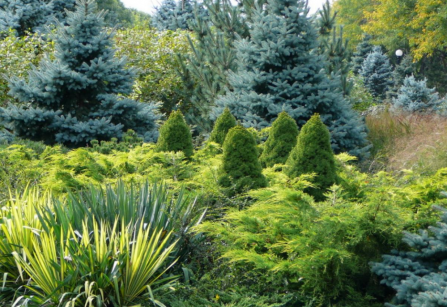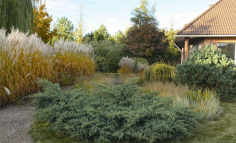Juniper coastal looks very decorative, and with skillful use in landscape design can become the main decoration of the garden throughout the season.
Material Content:
Description of varieties and types of coastal juniper
If you make a brief description of the species, then such a dwarf plant is a shrub with creeping branches. Crohn’s sprawling, thick. Under favorable conditions, this kind of juniper can reach two meters. The culture is mainly used as ground cover material.
In autumn, coastal juniper and its varieties look especially decorative - fruits that look like decorative cones appear on shrubs. They have a dark blue color with a bluish coating.
The main color of the needles is juicy green, but the Allgold variety has a golden color of needles, and the luxurious Pfitzerian Gluak is distinguished by its silver needles. Very beautiful view of the “Blue Pacific” with the needles of pale blue. Juniper of the coastal variety "Shlyager" became famous for its spreading crown up to a meter in diameter, needle needles with a gray-green bloom.
The plant is suitable for cultivation in the middle lane. You can call it unpretentious, because it does not need painstaking care.
Outdoor landing
To properly plant creeping juniper, you must first determine the site. The shrub can grow on any soil, while it prefers open sunny places, although it is able to take root well in openwork partial shade. Before planting, the seedling in the container is spilled plentifully. The hole for the plant is dug twice as much as the approximate volume of the roots of the plant.
In order for the bush to take root faster and not get sick, the removed earth from the hole should be replaced with nutritious soil mixture prepared from the following composition:
- sand;
- turf;
- peat.
The components of the mass are taken in equal parts. You can use ready-made soil for conifers, which is mixed with garden soil in equal proportions. Mineral fertilizer for conifers is added to the prepared soil mixture. Such a transitional layer of nutrient soil in the planting pit will contribute to better germination of the rhizome.
If on the site of heavy land or near ground water passes, at the bottom of the hole, it is necessary to make drainage from broken brick with a minimum salt of 20 cm.
The seedling is lowered into the formed hole and sprinkled with prepared soil, then moisturized abundantly. When planting the neck should remain at ground level.
In order for the moisture to linger longer near the roots, the plant is immediately mulched with peat or chopped straw, forming a layer of 7-8 cm.
Evergreen Shrub Care
The evergreen shrub Juniper coastal does not require particularly careful maintenance, like many other ornamental crops. Watering is minimized, and fertilizing adult bushes is simply not needed.
During the first week after planting, the plant needs a lot of moisture. In dry summers, already mature bushes moisturize only two to three times per season. Juniper is very fond of sprinkling, which is recommended in the summer twice a week in the evening.
Immediately after such a "soul" the earth around the bush should be loosened, it must be done superficially. Then the plants are mulched. If the variety is heat-loving, such measures should be carried out very carefully.
Only young bushes are fed in the spring. Suitable as nitrofosk fertilizer, which is consumed using 40 g per square earth. You can also fertilize with special compounds for conifers.
Juniper grows very slowly, so you do not need to cut it.
Only sanitary haircuts are needed at the beginning of the season.
Protection against diseases and pests
The most dangerous disease of junipers is rust. To stop the spread of such an ailment, shrubs are sprayed four times with an interval of 10 days with Arcerid, diluting 50 g of the drug in a bucket of water.
Of the insects, the most dangerous are spider mites and scale insects.
Against parasitic insects, spraying with Fitoverm and Decis preparations is used with an interval of 10 days, doing this twice.
Juniper coastal in landscape design
A plant of the Cypress family is a real find for landscape designers. Its prickly thickets are used in the preparation of evergreen compositions and as a background for flowering.
Culture reaches its peak of decorativeness at the beginning of the season, when the growth of young branches begins. Use as a tapeworm on lawns, for decorating office buildings and personal plots.
The bush in the rock gardens, as well as in the design of a living border, looks great.
Juniper coastal is one of the most undemanding decorative ornaments for the garden. The bush is delightful all year round, for decades leading the design of the garden, does not require painstaking care. In addition, the needles of plants can be used as a strong medicine against many diseases.



